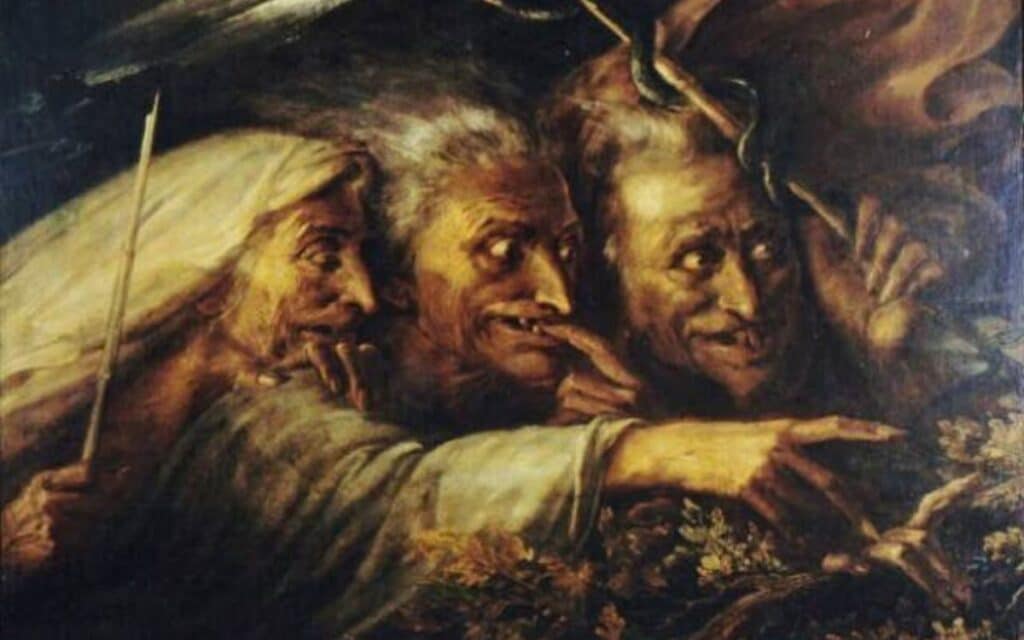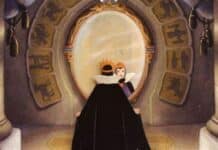William Shakespeare drew upon the public’s fascination with witches to craft his literary masterpieces. DR KAJA FRANCK delves into the intriguing connection between the Bard and the supernatural

It is the season of witches – for many this recalls the ‘weird sisters’ of Shakespeare’s Macbeth (c. 1606).
Yet, though the most famous, this is not the only reference to sorcery in Shakespeare’s work. Reacting to public interest and popular culture, Shakespeare drew on multiple sources for his depictions of witchcraft.
Witchcraft and the Sixteenth Century
There was genuine belief in witchcraft during Shakespeare’s lifetime as evidenced by both the legislation put in place against witchcraft and the trials themselves.
This was exacerbated during the reign of James I of England, also James VI of Scotland, who brought in a statute against witchcraft in 1604 that was even more severe than the one passed by his predecessor Elizabeth I.
Interest in witchcraft was bolstered through the regular publication of pamphlets which detailed the most notable trials, including salacious titbits. Witchcraft then was not just a matter of life and death, but also entertainment.
In the The Merry Wives of Windsor (c. 1602), witchcraft is a laughing matter. Uninterested in Falstaff’s wooing, the wives trick him into pretending to be ‘the old woman of Brentford’ (IV:2) so he can escape detection by Ford, one of their jealous husbands and a true believer in witchcraft.
Discovering the disguised Falstaff, Ford calls him a ‘witch […] under the profession of / fortune-telling’ (IV:2). (It has been suggested that the ‘Witch of Brentford’ is based upon an actual person Gillian of Brainford, a reference made in the 1602 quarto version.)
This scene, a comedic set piece, suggests that belief in witchcraft waxed and waned, and there was perhaps a little cynicism around these superstitions.
Eleanor of Cobham
In comparison, Henry VI, Part 2 (c. 1591) roots its witchcraft drawing on sources including Edward Hall’s The Union of the Two Noble and Illustre Families of Lancaster and York (1548) and Raphael Holinshed’s Chronicles (1587).
The witchcraft narrative centres on the case of Eleanor Cobham (c.1400-1452), the second wife of the Duke of Gloucester (1390-1447).
When they married, Gloucester was the Lord Protector of the child king Henry VI. Following the death of his elder brother, he became heir to the throne.
In the play, Cobham is depicted as a scheming necromancer. Along with a group ‘of naughty persons, lewdly bent’ (II:1) she is accused of having ‘practised dangerously against your [Henry VI} state, / Dealing with witches and with conjurers’ (II:1) to divine the future.
Two of her astrologers, Thomas Southwell and Roger Bolingbroke both of whom were historical figures, predict the King’s death which is treasonable necromancy.
Modern historians believe that the accusations against Cobham were most likely politically motivated. In the play, witchcraft is depicted as both real and a threat to the stability of the nation.
Macbeth’s Witches
Perhaps the most chilling depiction of witches in Shakespeare’s plays is, of course, Macbeth.
They arrive as a three and the number three recurs throughout their scenes. This can be interpreted as a reference to the maiden, mother and crone or Triple Goddess trope in Neopaganism, particularly give the textual references to Hecate.
However, it could also be interpreted as a perverse version of the Christian Godhead – God the Father, Son, and Holy Spirit.
Many of the rituals associated with witches during the 16th and 17th century were dark parodies of Christian rites.
Witches’ Sabbats were often described as containing corrupted versions of the sacrament or baptism.
Performed only a few years after the James I ascended the throne, the danger of witches in Macbeth reflects his fears of the supernatural.
The first witch threatens to drown a sailor whose wife refused her food.
This may allude to James I belief that witches had tried to drown him during a sea voyage. Indeed, the whole play is about a king who is undone by witchcraft.
There is a sense that the boundary between reality and the supernatural is blurred. The names of their familiars – ‘Graymalkin’ and ‘Paddock’ – reference real-life witch trials with which the audience would be familiar.
The tone of Macbeth is very different to the previous plays mentioned and has received numerous adaptations.
Modern readings have played with the notion that it is not the witches but Macbeth’s belief in the witches that causes tragedy.
Despite this, the play continues to unnerve from the moment the Weird Sisters step onto the stage until their divining runs its course.
Tell us your thoughts on this article in the comment section below!
Watch Shakespeare’s Witches in Macbeth Video
Read This Isle Is Full of Monsters: Jon Kaneko-James interview about the supernatural in the time of Shakespeare.







